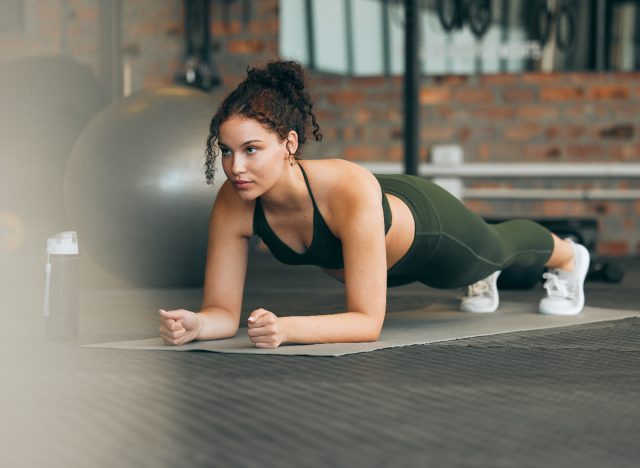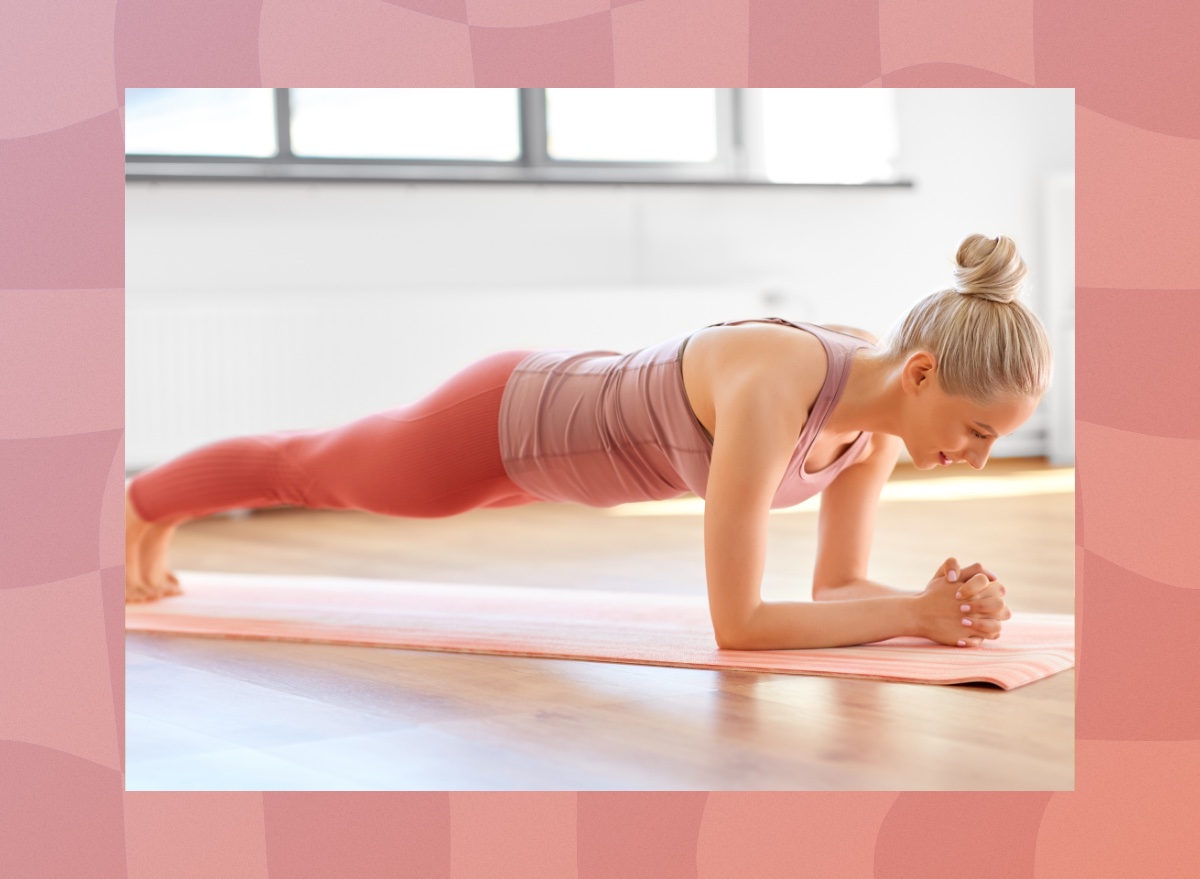A strong core is the foundation of total-body strength. It stabilizes your spine, improves posture, enhances athletic performance, and even reduces the risk of injury. And when it comes to testing core endurance, few exercises match the effectiveness of the plank.
Simple in appearance, the plank is a brutal test of muscular endurance, mental grit, and full-body stability. If you can hold it for a certain amount of time, it’s a solid indicator of strength—so much so that benchmarks separate beginners from those with elite-level core endurance.
So, how do you measure up? Let’s break down the time thresholds that define core strength, why holding a plank for longer matters, and how to push your endurance to the next level.

If you want to gauge your core endurance, time yourself in a standard forearm plank position. Here’s where you stand:
- Beginner (Less than 30 seconds): If your plank time falls under 30 seconds, your core endurance needs serious work. Your abs, lower back, and shoulders might fatigue quickly, and you may struggle to maintain a neutral spine. Don’t worry—everyone starts somewhere, and you’ll improve fast with consistent effort.
- Intermediate (30 seconds to 2 minutes): Holding a plank for at least 30 seconds places you in the average-to-good range. You’ve developed some core strength, but there’s room for improvement. Your core is solid if you can consistently hold a plank for 60 seconds with perfect form.
- Advanced (2+ minutes): If you can hold a plank for over two minutes with strict form, congratulations—you have a stronger core than 90% of people. This endurance level signifies elite core stability, spinal control, and muscular stamina. But the real test? How well can you apply that strength in movement-based exercises?

Planks aren’t just a test of core endurance; they play a vital role in overall strength, injury prevention, and performance. Holding a plank for longer durations strengthens multiple muscle groups, stabilizes the spine, and carries over to nearly every athletic movement. Here’s why plank endurance matters:
1. Stronger Core, Stronger Everything
Your core is more than just your abs. It includes your obliques, lower back, deep stabilizing muscles, and glutes. A strong core enhances full-body strength, making you more powerful in exercises like deadlifts, squats, and overhead presses.
2. Reduces Lower Back Pain & Improves Posture
Planks strengthen the deep core muscles that support the lumbar spine. If you struggle with lower back pain, weak core muscles might be the culprit. Planks help maintain a neutral spine by improving core endurance, reducing strain on the lower back, and improving posture.
3. Boosts Athletic Performance
A strong core translates to better speed, agility, and power. You rely on your core stability to generate force efficiently, whether sprinting, jumping, or changing direction. Increased core endurance also reduces energy leaks, helping you move more efficiently.
4. Enhances Everyday Functionality
A solid core makes daily tasks easier. Whether lifting heavy grocery bags, climbing stairs, or bending down to tie your shoes, core endurance supports real-life movement.
5. Strengthens Shoulder & Upper-Body Stability
Holding a plank requires isometric strength in your shoulders, traps, and triceps. Over time, this improves upper-body endurance, which carries over to push-ups, presses, and other upper-body movements.
6. Mental Toughness & Focus
Planks aren’t just physically demanding—they require mental resilience. Holding a challenging position under fatigue builds discipline, focus, and perseverance, all of which benefit training and everyday life.

If you want to hold a plank longer and develop an unbreakable core, follow these steps:
1. Perfect Your Form First
The key to maximizing plank endurance starts with flawless technique:
- Elbows under shoulders to maintain proper alignment.
- Engage your glutes and quads to prevent your hips from sagging.
- Squeeze your abs to keep a neutral spine and avoid arching your lower back.
- Keep your neck aligned with your spine—no looking up or down.
Pro Tip: Think of pulling your “belt buckle” to your ribs to engage your core even more!
2. Use Progressive Overload
Just like lifting weights, you need to increase your plank time gradually. Start with three sets of 30-45 seconds, then aim to add 5-10 seconds every few days until you hit your goal.
3. Try Advanced Plank Variations
Once you can hold a standard plank for 60 seconds, challenge yourself with these variations:
- Weighted Plank – Place a weight plate on your back for increased resistance.
- RKC Plank – Actively squeeze every muscle, your glutes, quads, and core, to maximize tension.
- Plank-to-Push-Up – Improve core endurance while building upper-body strength.
- Long-Lever Plank – Move your elbows slightly forward to create a more significant challenge for your abs.
- Side Plank with Reach-Through – Targets obliques while increasing rotational core strength.
- Stir-the-Pot (on Stability Ball) – Forces your core to stabilize against dynamic movement.
4. Strengthen Supporting Muscles
If you want a stronger plank, don’t just train planks—build overall core strength with these exercises:
- Hanging Knee Raises – Targets lower abs for improved endurance.
- Ab Rollouts – Builds anti-extension strength, a key plank component.
- Dead Bug – Strengthens deep stabilizers for core endurance.
- Hollow Body Hold – Trains full-body tension and core control.
- Cable Pallof Press – Develops anti-rotation strength, crucial for core stability.
5. Train Core Endurance Frequently
Train your core at least 3-5 times per week to increase your plank time. Incorporate planks into your workouts with multiple sets and short rest periods to build endurance. Don’t be afraid to sneak planks into your warm-up to ensure your core is ready for your workout.
Plank endurance is a true test of core strength, and if you can hold a plank for over two minutes, you’re in elite territory. But strength isn’t just about how long you can maintain a static position; it’s about how well your core functions in movement.
Keep challenging yourself with advanced variations, train your core consistently, and apply that strength to bigger lifts, sports, and everyday life. A strong core isn’t just for show—it’s the key to total-body power, resilience, and long-term performance.
Now, time yourself. Where do you rank? And more importantly, how much stronger can you get?
- Calatayud, Joaquín et al. “Tolerability and Muscle Activity of Core Muscle Exercises in Chronic Low-back Pain.” International journal of environmental research and public health vol. 16,19 3509. 20 Sep. 2019, doi:10.3390/ijerph16193509
- Lum, Danny, and Tiago M Barbosa. “Brief Review: Effects of Isometric Strength Training on Strength and Dynamic Performance.” International journal of sports medicine vol. 40,6 (2019): 363-375. doi:10.1055/a-0863-4539










